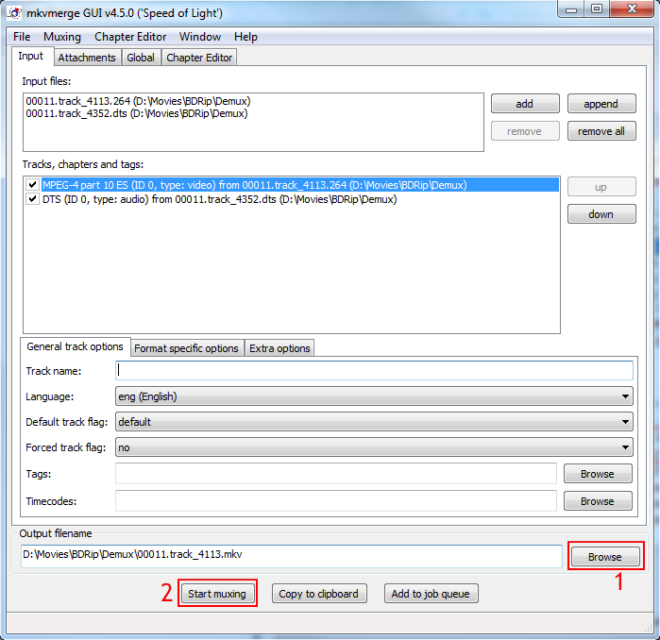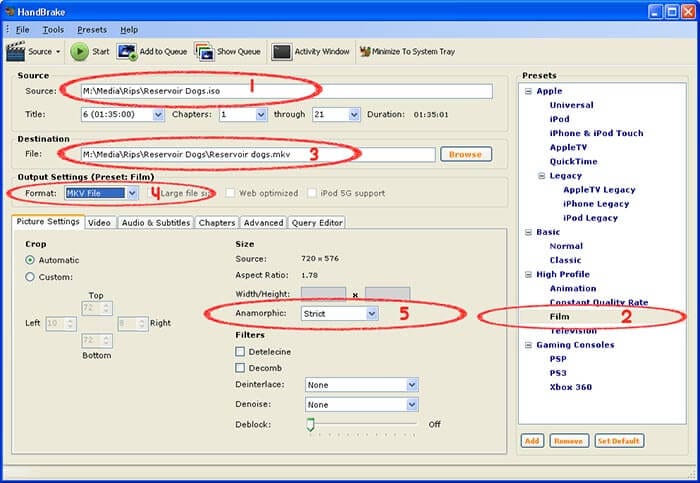This choice was made because HD DVD was the clear loser to Blu-rays in the fight for the HD content storage medium. However, mkvmerge does support Blu-ray subtitles, also called PGS subtitles, which often use the file extension.sub. If you want to mux existing HD DVD subtitles, you have to convert them to the Blu-ray format first. You can also merge multiple subtitle files with an MKV video file. How to merge subtitles with an MKV video using MKVToolNix. MKVToolNix is a set of free tools to create, split, edit, mux, demux, merge, extract, and inspect MKV video files. It's available for Microsoft Windows, Linux, and macOS. Step 4: Finally, decide an output path and hit on 'Convert' to export the MKV video with subtitles added. How to Add Subtitles to MKV Using MKVToolNix GUI. MKVToolNix GUI is an open-source toolkit that offers a set of tools to convert and edit MKV files on Windows, Mac, and Linux. To Add subtitle files to MKV, using it is also doable. In an MKV container all streams supported by your playback or other video related software are treated equally. Compared to MPEG-2 TS (Transport Streams), the Matroska container is more widely supported in media players, or as a source for editing and encoding programs. MKV and DTV Captures MKV files are most commonly used for DTV captures.
This article will guide you through the steps of ripping a Blu-ray disc, demux it and then remux it to mkv format. This way you will get a huge, but unprotected, easy to use and store mkv file that contains the exact video and audio streams as your Blu-ray disc quality and size-wise. You can then use this file as input for another program, use any player to watch it in about any platform or just store it in your hard drive as a backup.
You will need the programs below for this guide. Click on the links to download them straight from our downloads database.

Step 1
Before you start processing your disc you need to use an unlocking software to circumvent the Blu-ray's protection. I really suggest you let AnyDVD HD do that job. You can download it here or check the authors page here. Install it and forget it is even there. It will do all its work on the background.
Step 2
Open up BDInfo. Using this application we will determine in which files the main movie is and what streams we need. Browse (1) and select the BDMV folder in your Blu-ray disc. Check out which playlist contains the movie (2), obviously the one with the biggest length and check its name. In this example, our Blu-ray uses seamless branching, in plain words it has a 'Director's Cut' feature and it uses various smaller m2ts files (3) you can see in the list below. That is why we have one bigger playlist, and another one a bit smaller. In normal Blu-rays you will only have one big playlist and one m2ts file. Make sure that in the various video and audio streams area (4) you right down the fps value of the video, in this example 23.976. Now, leave BDInfo open and run tsMuxeR
Step 3

To start, add (1) the playlist file that we have already found in BDInfo. tsMuxeR will automatically load all the m2ts files assosiated with it. Now we have our main movie loaded and ready for extraction. Select the main video track, the audio that you want to keep and any subtitles (2) you may need later on. Then set output to Demux (3) and after you set the location of the output files, click Start demuxing (4).
Step 4

tsMuxeR will now copy the tracks you have selected to your hard drive. This process will take from about 45 to 90 minutes, depending on the speed of your Blu-ray drive and the size of the disc. When it is done, click OK and close tsMuxeR. Next step is to create our mkv file, so run mkvmerge GUI (named mmg.exe in the archive you have downloaded).
Step 5
First of all, we need to set as input all the files that tsMuxeR created, so click add (1) and select all the files that we demuxed before (2). You can also add subtitles in Blu-ray's .sup format. Now we need to set some options. Select the video track (3), set the language (4) and then click the Format specific options (5) tab.
Step 6
Here you need to add the FPS value exactly as the one you wrote down at Step 2.
Step 7
Feel free to add the correct language to any other audio or subtitle tracks you may have and when you are ready Browse (1) to set the output filename and click Start muxing (2) in order to start the process.
Dvd To Mkv Mkvtoolnix Converter
Step 8
That's it. A few minutes later you will have an mkv file containing the exact video and audio streams of your Blu-ray disc. You should delete all the files tsMuxeR created as you no longer need them. You can now test your mkv file using any player that supports that format and then use it as you please.
A harder question about DVD ripping is what is the best way to rip a library of episodic TV DVD. The biggest issue with DVD TV Series Boxsets is if you can rip DVD episodes to MKV or MP4 files that include all audio tracks and subtitles to play back using VLC in separately. It is no doubt that ripping each episode individually works the best, especially considering that most front ends have nice interfaces to manage TV shows. So what way is the best to rip individual TV episodes? Lets take a look at the most popular software out there that can be used to create individual episodes, with a focus on mkv and mp4 keeping multiple subtitle and audio tracks.
Pavtube ByteCopy
- Tools – ByteCopy
- Additional Resources – review
- Media Type: DVD, HD DVD, Blu-ray and 4K Blu-ray
- Output File: multi-track MKV/MP4/MOV/AVI, 4K MP4/MKV, HD WMV/TS/FLV and more
- Decrypter Needed: No (ByteCopy has built-in decrypter)
- Encoding – Yes
- Retain Original Video/Audio: Yes
- Batch Mode: Yes
- Cost – Free while in Beta
- Comments: Pavtube ByteCopy is a pretty efficient piece of software that can create MKVs from Blu Ray/HD DVDs/SD DVDs with all subtitle and audio tracks in lossless video and audio quality. It is very easy to pick out the individual episodes versus other extras. There is no good way to determine which Title is which episode, so once the DVD TV sets are loaded, you need to check the title one by one. When it comes to ripping DVD TV sets, it also can convert DVD to MP4/MOV with multiple audio tracks and rip DVD to WMV, FLV, TS, WebM and more.
Dvd Converter Mkv
Ripping episodic DVD to multitrack (audio) MKV or MP4 files
Step 1: Add the DVD TV Series
Insert your DVD disc to the drive, then launch the DVD Ripper and click the “Load Disc” button to select and load the DVD TV Series to the app. This program will automatically choose the main title of the DVD TV Series disc. If you want to rip DVD to different episodes, you can tick each chapter instead of the whole DVD main title.
Step 2: Choose MKV or MP4 files
Choose MKV format as output, here “Format > Multi-track Video > Lossless/encoded Multi-track MKV (*.mkv)” is recomended for you. And the audio tracks, subtitles streams, and chapters preserved in the MKV container are available to select at will during playback. If you want MP4 format, you can choose multi-track MP4 as the output format.
Tip: There is a “Settings” option, which allows you to make adjustments on your audio, video, subtitles. It’s worth mentioning that, by default, all audio & subtitles tracks in a source file are checked to be saved in the MKV container, if there are some tracks you don’t like, you can click Settings button and go to Multi-task Settings window to uncheck and remove them under Audio tab and Subtitle tab.
Note: To do DVD to MKV conversion without re-encoding, don’t change audio parameters under “Encode” option, otherwise you will get a encoded multi-track MKV file, not lossless multi-track MKV and recoding DVD to MKV will take a little more time for conversion than lossless output.
Step 3: Start DVD to multitrack (audio) MKV or MP4
Mkvtoolnix Dvd To Mkv
Click big “Convert” button to start DVD TV set to . Once finished, open the output folder, locate the generated MKV or MP4 file with multiple audio tracks.

Dvd To Mkv Mkvtoolnix Software
Now, you can play the DVD TV sets using VLC in separate episodes.
